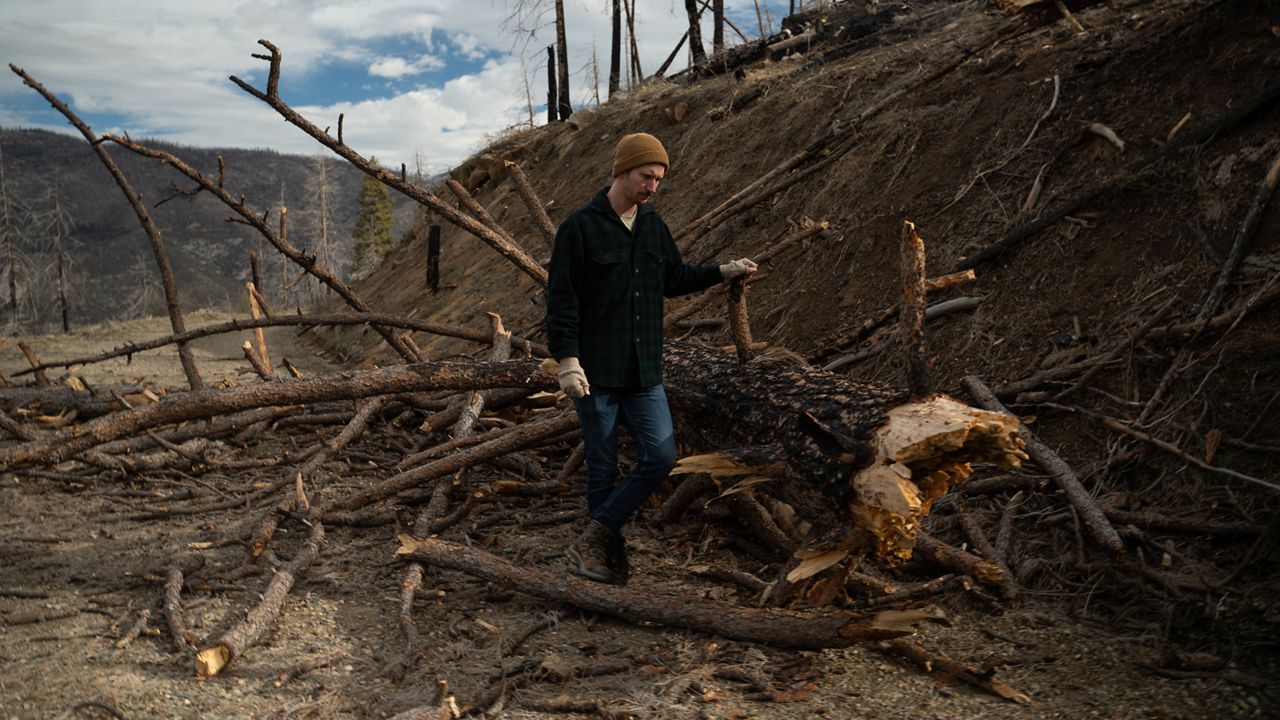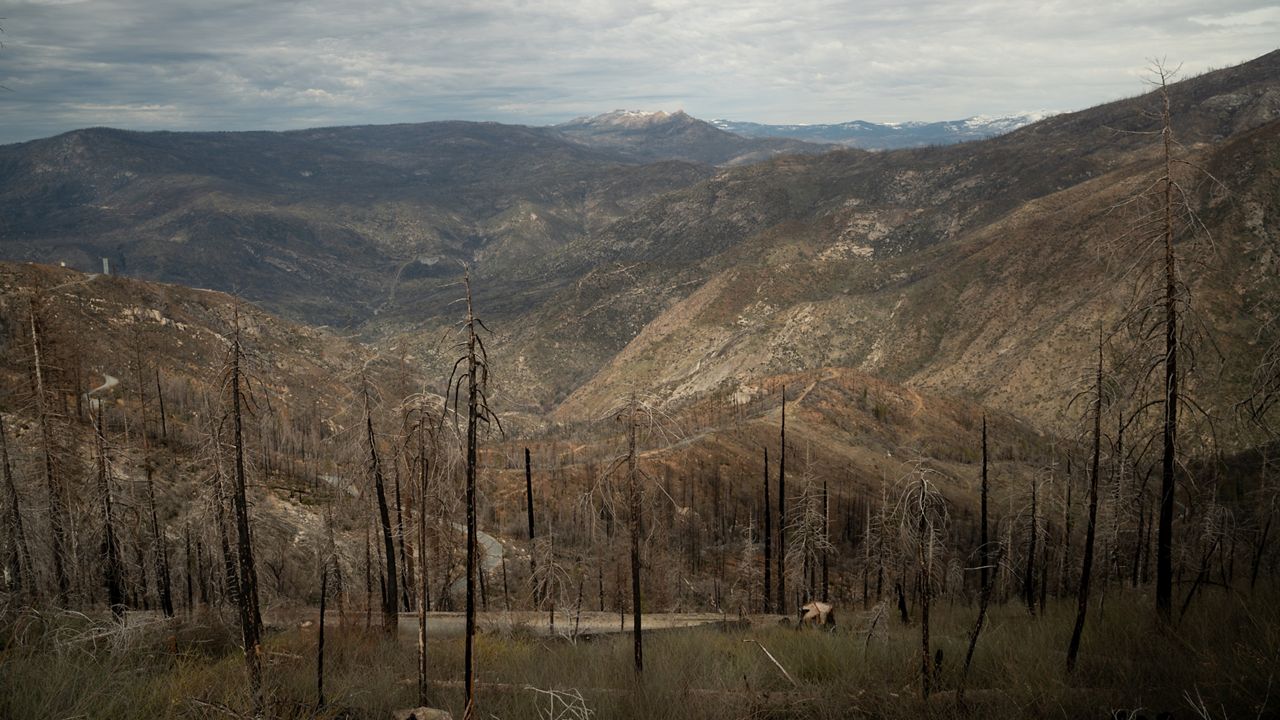LOS ANGELES — Because of climate change, approximately 20% of conifer forests in the Sierra Nevadas are no longer compatible with the area’s environmental conditions, according to research published last year.
Scientists have dubbed those mismatched ecosystems “zombie forests.”
What You Need To Know
- In the Sierra Nevadas, 20% of conifer forests are no longer compatible with the area’s environmental conditions
- Zombie forests transform into other ecosystems, like chaparral shrubland, following severe disturbances
- Prescribed fires can improve the health of forests by protecting vulnerable areas from devastating wildfires
- The number of zombie forests in California is likely to double by the end of the century
Conifer trees like Jeffrey pine, Douglas fir and incense cedar have grown in the Sierra Nevadas for millennia, but according to Avery Hill, the lead author on the zombie forest mapping work, rapidly changing environmental conditions are making it increasingly difficult for those species to survive in the region.
“There’s a bunch of living trees around us. This is currently a conifer forest,” Hill said, walking on a woodland path near Shaver Lake. “According to our maps, our models, the climate here has become too warm and too dry to support conifer forests over longer periods of time.”
Using computer modeling, Hill and his co-authors found that over the past century, conifers have not been able to keep up with the pace of environmental change, only shifting 112 feet up-slope, while ideal conifer conditions have shifted nearly 600 feet up-slope.

And though many conifers continue growing in the region, Hill refers to some of those trees as “the standing dead,” suggesting it is only a matter of time before they too disappear.
“We think that these forests, following pretty severe disturbances like wildfires, might not come back as forests,” Hill said. “And might actually turn into some other type of forest, or kind of chaparral shrubland.”
That means countless species that rely on conifer forest habitats like spotted owls and pine martens will be forced to adapt, move or die. It also potentially increases the chances of catastrophic wildfires — as chaparral shrublands are prone to higher-intensity fires than conifer forests are.
But woodland creatures and vegetation aren’t the only ones impacted, Shaver Lake locals like Kimberly Hogue have seen firsthand the devastating impacts severe environmental conditions can have on forests.
“We watched trees. They would look like they’ve been dead for a long time, and really it was about two weeks, from start to finish,” Hogue said. “When they get infested with the bark beetle, they would be gone. And so, we saw massive tree loss.”

As a real estate agent, Hogue was concerned the changing landscape would dissuade folks from visiting or moving to the area, but so far, she says folks continue coming to Shaver.
Hill says there are a few ways to improve the health of forests, one of which being prescribed burns which protect vulnerable areas from more devastating fires by reducing the amount of combustible fuel — a practice that was practiced for centuries by Indigenous tribes. But in the long run, he also says it’s too late to save many of California’s conifer forests.
“There’s room to be optimistic and there’s a lot of uncertainty, but I am voting with my feet here and I’ve committed my career to understanding what large-scale vegetation transitions look like because I think we’re going to expect a lot more of them,” Hill said.
According to Hill and his co-authors, the number of environmentally mismatched conifer forests will likely double by the end of the century. Even still, he says working to understand and protect vulnerable environments is vital and he has hope that humans can still have a positive impact on the ecosystems we have already seriously compromised.



